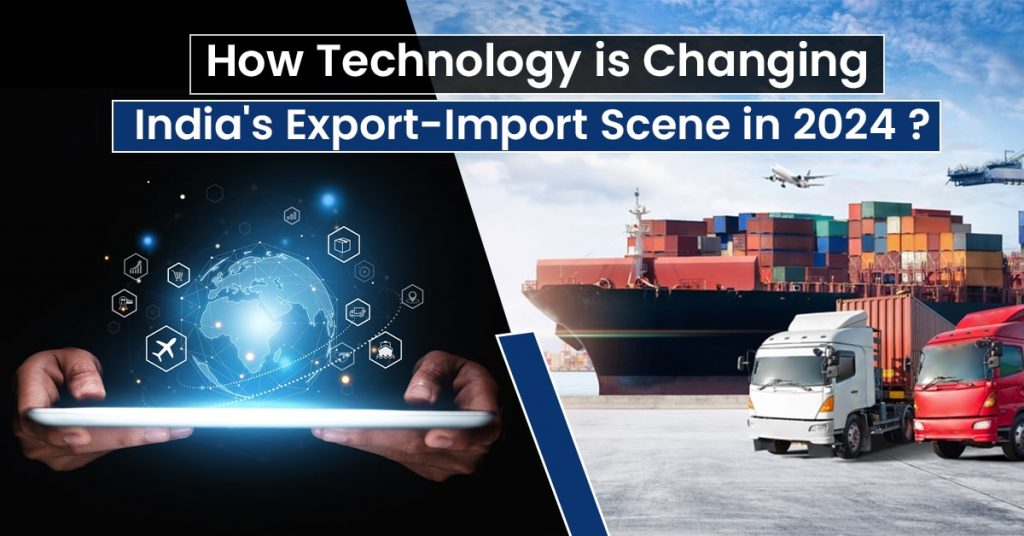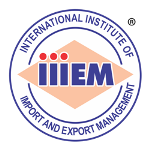
India is getting ready to step into a new era of economic growth. Technology is changing how Indian businesses trade with other countries. This blog talks about how technology is making import-export processes easier and creating new chances for Indian companies.
The Current State of Indian Trade
Import-export is very important for India’s economy. It adds a lot to the country’s GDP and creates jobs. But there are some challenges:
- Too Much Paperwork: Doing everything on paper slows things down and causes mistakes.
- Hard to See What’s Going On: Rules are complicated, and it’s tough to know what’s happening.
- Getting Money is Tough: Smaller businesses have trouble getting loans because they don’t have all the paperwork banks want.
- Problems with Moving Stuff: Getting goods from one place to another can be slow and expensive because the system isn’t efficient.
These challenges stop India from reaching its full potential in global trade. But, within these problems, there are huge chances for growth:
- India Loves Tech: More and more people are using digital stuff, which opens the door for tech solutions.
- Government Helps: The government is pushing for digitalization with programs like Digital India. This helps businesses a lot.
- Lots of Young Techies: India has a big population of young people who are good with technology. They can easily learn new digital systems.
How Technology is Making a Difference?
Technology is changing the game for Indian trade in a few big ways:
(I) Making Trade Easier:
- One-Stop Shops: Websites like Single Window Interface make it easier to do paperwork and get things cleared fast.
- Online Markets: Platforms like TradeIndia connect Indian sellers with buyers worldwide, opening up new markets.
- Blockchain: This tech keeps records secure and helps track goods, making trade more reliable.
(II) Better Logistics:
- Smart Systems: Software helps plan deliveries better, saving time and money.
- Tracking Tools: Knowing where goods are at all times helps avoid delays and losses.
- AI Helps: Artificial intelligence helps plan routes and manage deliveries more efficiently.
(III) FinTech Boost:
- Easy Money: Online platforms connect businesses with lenders, making it easier to get money for trade.
- Digital Payments: Safe online payments cut down on cash transactions and costs.
- Currency Made Simple: Online platforms give real-time currency exchange rates, making international trade less risky.
Government’s Efforts in Boosting Export Import in India
India has much to offer in global trade but has faced problems for a long time. The government has been taking steps to assist:
(I) Rules and Incentives for Trade: Making Things Easier
- Foreign Trade Policy (FTP): This is the main plan for how India does import-export. It explains all the rules, tax breaks, and rewards for exporters. The latest plan (2023-26) wants to make doing business easier by simplifying things, using online tools, and solving problems faster.
- Remission of Duties and Taxes on Exported Products (RoDTEP): This plan helps exporters get back some of the taxes they paid but didn’t get refunded under GST. This makes Indian exports cheaper and more attractive.
Read Also: What is RoDTEP Scheme? Understanding Objectives, Features, Principles, Eligibility
- Interest Equalization Scheme (IES): This plan helps Indian exports compete with others by giving them loans at lower interest rates. It makes it easier for exporters to handle the money side of things.
- Export Credit Guarantee Corporation (ECGC): This is like insurance for exporters. It protects them if they don’t get paid by buyers in other countries, so they feel safer trying new business ideas.
Read Also: What is ECGC and How it is Helpful for Indian Exporters?
(II) Building Better Infrastructure: Connecting Gaps
- Dedicated Freight Corridors (DFCs): These are like super-fast train tracks just for carrying goods. They help make moving things smoother and cheaper for exporters.
- Trade Facilitation Agreement (TFA): India promised to follow this agreement to make customs (where goods get checked at borders) easier and use less paper. This speeds up trade by getting goods through borders faster.
- Sagarmala Project: This is a big plan to make ports better, improve the coast, and connect India better to other countries by sea. It aims to make trade cheaper and open up more markets around the world.
(III) Learning Skills and Accessing Markets
- Special Economic Zones (SEZs): These are special areas where businesses get benefits like not paying taxes on imports and having fewer rules. This makes them attractive to foreign investors and helps make more stuff for export.
- Skill Training Programs: The government runs programs to teach people the skills they need to work in global trade. This helps make Indian workers better at their jobs.
- Getting into New Markets: India joins trade deals, sends groups to other countries, and goes to big trade events to help Indian businesses find new places to sell their stuff.
The future of India’s import-export business seems bright. There will be a lot of attention on changing rules, making better infrastructure, teaching new skills, and helping businesses reach new markets. Also, technology like digital trade and blockchain will make things easier and clearer. Plus, the government wants to help industries like medicine, electronics, and machines to sell more things abroad, which means big chances for export.
By providing comprehensive export-import training and consultancy services, iiiEM – Best Export Import Course in India, plays a vital role in equipping Indian businesses with the necessary knowledge and skills to thrive in the evolving trade environment. Understanding government initiatives and staying updated on the latest developments is crucial for exporters to leverage opportunities and contribute to India’s export growth.
